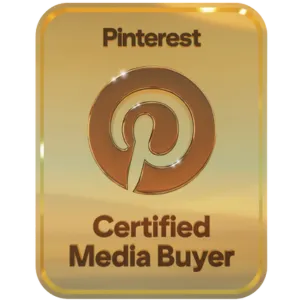The Boutique Ad Agency Trusted By Coaches & Course Creators
✔︎Facebook Ads ✔︎Instagram Ads ✔︎Pinterest Ads
DONE-FOR-YOU. DONE-WITH-CARE.
How we scale your business ↴

"We've achieved three back-to-back 7-figure launches, significantly increasing profitability. Working with Karen has become one of the most positive, consistent, and reliable aspects of running our business.
She goes beyond simply managing ads; she actively partners with founders who are engaged and committed to their businesses. Working with Karen isn't just about better marketing—it's about feeling truly supported as you grow your business."
- Stacie Bloomfield, Founder Gingiber & Leverage Your Art
A True Partner Bringing Leads & Sales to Multiply Your Growth
Stay in your zone of genius while our high-impact, high-care team scales your business. We've helped our clients generate millions of dollars in revenue.
And we love a multi-platform approach. (we don't believe in putting all your eggs in one basket)
What we do believe in, is truly understanding your business and your goals. crafting tailored strategies and proactively following the data.


Why We Love
Meta Ads
Meta (Facebook + Instagram) ads give us powerful targeting tools, rich creative formats, and detailed performance data, all in one place. Whether you're looking to grow your email list, fill a webinar, or scale a high-ticket offer, Meta lets us reach the right people at the right time with the right message. It’s one of the most flexible and profitable platforms for coaches and course creators when paired with the right strategy.

Why We Love
Pinterest Ads
Pinterest is a powerful platform for intent-based marketing. People come here to plan, dream, and buy. Unlike social platforms that rely on impulse, Pinterest users are actively searching for solutions, making it a goldmine for evergreen content, digital products, and course sales. With the right strategy, Pinterest ads can deliver consistent, high-converting traffic at a lower cost—especially for visual brands and educators.
Results We Get
150%
INCREASE IN REVENUE
(IN JUST 3 MONTHS)
12X ROAS
ON EVERGREEN &
LAUNCH PRODUCTS
$10M+
DOLLARS OF
REVENUE GENERATED
We're KND 👋
Led by me, Karen Nelson, we're an all female micro agency getting clients mega results with Facebook, Instagram & Pinterest Ads.
Prior to my ad agency life, I was an elementary school teacher for 15 years and I’m passionate about education (and that’s why I love scaling businesses for course creators and coaches).
What makes our team different is that we KNOW your business and we CARE about your results as much as you do. We prioritize long term partnerships and excellence in communication & strategy.
Let us take care of you ↴
Get in Touch
Want to work with us? BOOK A CALL HERE
Want to have me as a podcast guest or ask me a question?
Fill out the form and I'll be in touch!





